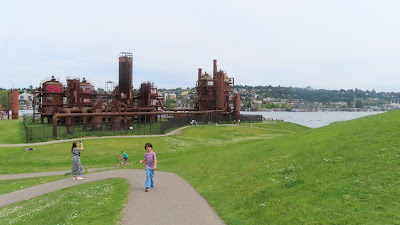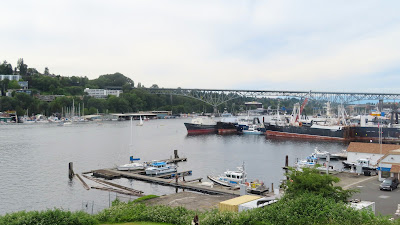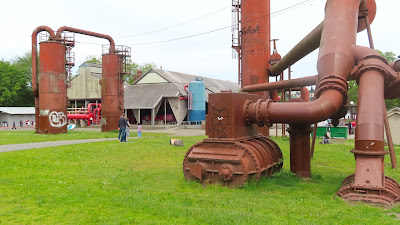Entering Gas Works Park, Seattle. All photos in this post belong to my personal archives. June 2024.
I had read about Gas Works Park in a Theory of Landscape book. And since then, it was on my "visit list". I finally could get there this month, on a hot, not so sunny day.
Architectural ruins as part of the landscape was an important subject during the Romanticism of SXIX, and it was described in literature and arts:
There is an aesthetics of ruins which I have described a few years ago in this article, published on Arqa:
Needless to say how much I enjoyed the visit to the park that was a real example to my article about ruins.
The view across the Lake Union is Downtown Seattle and this view is enhanced by going up a hill, which I do not know if it is natural or artificially created. This hill gave me the possibility to take full pictures of the abandoned building which has become a sort of monument.
"Gas Works Park is a park located in Seattle, Washington, United States. It is a 19.1-acre (77,000 m2) public park on the site of the former Seattle Gas Light Company gasification plant, located on the north shore of Lake Union at the south end of the Wallingford neighborhood. The park was added to the National Register of Historic Places on January 2, 2013, over a decade after being nominated. Gas Works Park contains remnants of the sole remaining coal gasification plant in the United States. The plant operated from 1906 to 1956 and was bought by the city of Seattle for use as a park in 1962. The park opened to the public in 1975. It was designed by Seattle landscape architect Richard Haag, who won the American Society of Landscape Architects Presidents Award of Design Excellence for the project. The plant's conversion into a park was completed by Daviscourt Construction Company of Seattle.".....
"Gas Works Park incorporates numerous pieces of the old plant. Some stand as ruins, while others have been reconditioned, painted, and incorporated into a children's "play barn" structure, constructed in part from what was the plant's exhauster-compressor building. A web site affiliated with the Seattle Times newspaper said, "Gas Works Park is easily the strangest park in Seattle and may rank among the strangest in the world."
Ascending the kite hill.
At the top of the kite hill there is this organic art work on the ground. This is the only ornament in the literal sense of the word.
The main Gas Works building as seen from the kite hill.
Side view to the bridge and marina.
Side view from the hill, inland. The path leads to the children's playground.
Getting closer to the main building.
Downtown Seattle at the end of the perspective. On the right, a man enjoying the peace.
A closer view of the building which is surrounded by a wire fence. There are some graffiti and dry vines branches that climbed on the ruins long ago.
Walking to the children's playground and barn.
Downtown Seattle at the end of the perspective.
Getting closer to the barn. The industrial structures are painted and the gain color at the children's area.
The structures in front of the barn.
The barn and the playground with the industrial remnants incorporated as part of the play ground.
Inside the barn, the remnants of the old Gas Works building have been painted in bright colors. One can walk around but not climb the remnants.
Inside the barn, like a vibrant colors museum.
A view to the lake from the playground.
A look to the main building from the playground.
The work of a genius in this playground!
Approaching the playground.
Remnants of a block fence, covered in vines at the entry of the park. A great conceptual idea of the dignity of ruins.

































